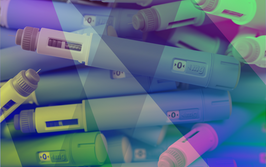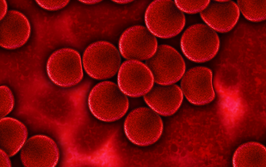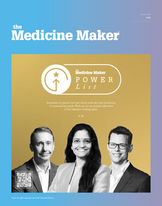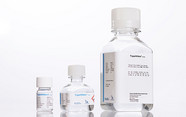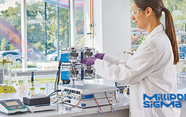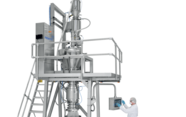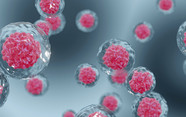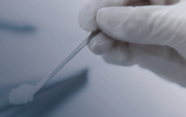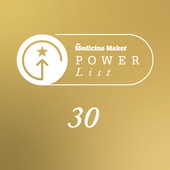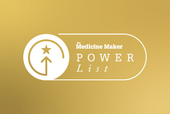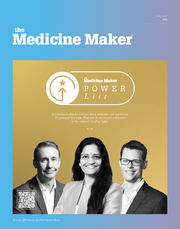
Fill-Finish: The Easy Step? Think Again
Mistakes in fill-finish can lead to lost batches, lost profits, and increased regulatory scrutiny. It’s crucial that this important step gets the attention it deserves. Four experts discuss.
Stephanie Vine | | 10 min read | Hot Topic
How much attention do you pay to the fill-finish process? And how much do you know about its importance?
The fill-finish step is the final and one of the most critical stages of the production process, where the drug product – often a sterile liquid – is transferred into its final container, such as a vial, syringe, or cartridge. For lyophilized drugs, the liquid is filled into the container and then freeze-dried in place. This step must be carried out under highly controlled and sterile conditions to ensure the product remains uncontaminated and safe for patient use. Once filled, the containers are sealed, labeled, and packaged, completing the product’s journey from formulation to distribution.
Sounds simple, doesn’t it? However, it’s a very complicated process that can have serious consequences if anything goes wrong. Additionally, because fill-finish requires specialized facilities and equipment, it can become a bottleneck in production, especially during times of high demand or rapid product launches.
Here, four experts walk you through why fill-finish is so important and offer their best practices for success.
Meet the Experts
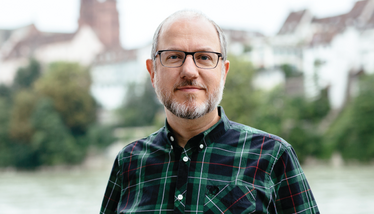
Hanns-Christian Mahler, CEO and board member at ten23 health
Hanns-Christian previously led the drug product services business unit at Lonza AG, and has worked in leadership roles at Roche and Merck KGaA. He has extensive expertise in formulation development, process development and validation, sterile manufacturing, and regulatory submissions with numerous IND/IMPD and BLAs.

Kelly Christiansen, VP, Drug Product Operations at Grand River Aseptic Manufacturing
Kelly is a goal-focused operations professional with over 30 years of experience in the life sciences manufacturing environment. He has a strong background in Lean Six Sigma methodologies and consistently demonstrates his commitment to continuous improvement in productivity, quality, safety, and processes through innovation and customer commitment.

Josh Russell, VP, Technical Sales at AST Inc.
Josh has been leading the design and implementation of new, innovative technologies within the life sciences for over 20 years and has a passion for developing solutions that support and drive breakthroughs in patient-centered medicine. His extensive experience includes spearheading the design and development of adaptive robotic systems for aseptic processing, now widely used throughout the pharmaceutical manufacturing industry.

Madhu Raghunathan, Sr. Director of Business Development and Market Strategy at West Pharmaceutical Services
Madhu currently leads the technical services business development team and is also responsible for services innovation and go-to-market strategy. Prior to West, he worked for over a decade in business development, product management, strategy development, marketing leadership roles with technologies and services used in manufacturing of Biologics and Fill-Finish of Injectables at Thermo Fisher Scientific and Cytiva. Earlier in his career, he worked with medical devices and industrial automation technologies in R&D roles and holds degrees in engineering and business management.
What is the general perception of fill-finish activities? Is this step sometimes overlooked or underappreciated in its complexity?
Hanns-Christian Mahler: Sterile drug product manufacturing is absolutely underappreciated and overlooked. You can even see it in the term “fill-finish.” Many assume that the process is just about filling a solution into a container – and how difficult can that be?! The answer is that it is a very important and challenging process. Many companies have experienced major crashes and issues during fill-finish, leading to project delays or even company failures.
Madhu Raghunathan: Drug substance manufacturing, which precedes the fill-finish step, is a complicated process, especially when it comes to biologics. In comparison, fill-finish can be seen as a simpler process with less complexity, but there are many technical aspects to consider to ensure quality, sterility and safety.
During fill-finish, the API is usually diluted with sterile water for injection followed by the addition of excipients and a final adjustment to the pH level. After the final steps of the formulation process and before final filling into sterile containers, sterile filtration takes place. Here, it is essential to maintain and monitor the integrity of the sterilizing filter. Contaminants are a threat along the entire process, so the use of appropriate infrastructure, equipment, manufacturing controls, inspection methodologies, and quality protocols are essential to ensure sterility of the drug product.
Any mistakes in fill-finish can lead to very costly outcomes, or even loss of an entire batch. It is very important to give fill-finish the appreciation and focus that it deserves.
Josh Russell: The broader pharma manufacturing industry takes fill-finish activities extremely seriously, as evidenced by the recent revisions of Annex 1 and the adaptations the industry has made to ensure compliance and improve overall quality outcomes. However, it is also true that fill-finish can be underappreciated by some companies, particularly during the early stages of clinical development or clinical trial manufacturing. The focus is often on the product and container, rather than the filling process itself, which can result in
downstream manufacturing requirements becoming more difficult to automate at the commercial scale in an aseptic drug product environment. Commercial manufacturing and aseptic production processes should always be considered early on.
Kelly Christiansen: Fill-finish activities are crucial for patient safety. Bioburden reduction in the controlled filling environment is also an imperative. However, I do agree the level of intricacy as it relates to container handling can sometimes be underappreciated. The preciseness of equipment alignment, along with equipment integration for each step in the filling process, coupled with different container types in various sizes, is extremely complicated. Another area that can be overlooked is visual inspection. Beyond equipment operability, the various types of validation are extensive, with a high level of complexity to ensure equipment and process robustness.
What common issues can occur in fill-finish, particularly in less experienced companies?
Mahler: Inadequate formulations or processes that were not properly assessed or developed can cause numerous issues. Common problems include:
- product instability (e.g., aggregation or precipitation of APIs during mixing or pumping/filling)
- material adsorption (from disposables or filters)
- evaporation of critical excipients (e.g., polysorbates, preservatives) leading to batch inhomogeneity
- product contamination because of processing materials used (e.g., disposables)
- environmental contaminations (e.g., microbiological or particulates).
Additionally, the drug product (DP) specifications must be closely aligned with drug substance (DS) specifications – because using DS at specification limits may lead to DP specification failures. I have also seen failures of extractable volume (EV) for DP because the target fill volume was set on prior EV studies that did not consider fill variability. With some fill-finish facilities, fill variability can be huge, leading to insufficient fill volume for EV testing and hence failure during quality control (QC).
Raghunathan: I find that common issues often stem from environmental and contamination control, such as infrequent or inadequate monitoring of locations within the cleanroom or filling line. Operator errors from open manipulations within filling systems, glass breakage, improper management of single-use components or primary packaging, and inaccurate fill volumes are also common problems. While there will always be some product loss because of the drug product remaining within the fluid path after completion of the fill-finish steps, the amount of loss can be reduced with tight operator protocols.
Russell: Right now, a major trend is reducing both routine and non-routine operator interventions in aseptic processing steps, with companies instead looking to new methods and technologies. However, less experienced companies looking to minimize budget spend may choose equipment that is on the fringes of compliance, or reduce the amount of technology or systems purchased, which can lead to regulatory issues further down the line, ultimately costing the company more.
What are the most important best practices and considerations during fill-finish?
Raghunathan: Overarching best practices should include continuous and rigorous aseptic training for operators, a robust risk assessment, intervention protocols to identify and handle process risks and deviations, use of quality by design methodologies, and strong adherence to quality controls and procedures.
From an infrastructure and equipment perspective, I suggest the use of robotics and automation techniques to minimize operator intervention, use of ready-to-use packaging components, strong raw material assessment/management programs, implementation of continuous testing methodologies to ensure equipment and consumable adherence to pre-established thresholds, 100 percent in-process (non-destructive) weight checks, and fully automated visual inspection.
Russell: There are three essential legs to the aseptic manufacturing stool: well-trained operators, clearly defined and robust procedures, and built-for-purpose facilities. All three must come together to produce the highest quality drug products. Operator training, both in terms of aseptic techniques and operating today’s sophisticated manufacturing systems, is essential. Equipment and control systems that emphasize best practices and minimize interventions or the chance of errors should be used to reinforce good operator training.
Christiansen: The three elements from my side are first, operational discipline, including following procedures, work instructions, and batch records, using good documentation practice principles with every step of the process. Second, attention to detail. Examples of this are listening to equipment for potential unusual noises, verifying all 10 digits of an item number instead of the last three or four, and verifying the expiry date, including the year, for accuracy. Third is an operational excellence program that drives continuous improvement culture with the use of Lean Six Sigma principles.
Mahler: I would add that it’s important to think about the drug product process holistically, from formulation to the manufacturing process, to testing, and QC. Prior knowledge and expertise can help to mitigate potential issues. This includes developing formulations appropriately; choosing process unit operations and related operating ranges wisely; and ensuring testing and QC specifications align with drug substance.
What separates good fill-finish equipment from average equipment (or bad equipment)?
Russell: Isolator technology is a key operational differentiator and is seeing rapid adoption within the fill-finish production space. Isolators provide an enhanced safeguard of the aseptic environment by fully enclosing the aseptic process, which also has the advantage of reducing the overall facility footprint. Additional considerations include technologies such as automated environmental monitoring and material handling, and real-time process feedback, such as advanced in-process weight checks.
Ease of maintenance and strong support from your equipment manufacturer are also critical to ensuring that a good fill-finish line stays running at its best. Remote support and the ability to diagnose problems in real time, especially for products that have tight windows for filling, is a major advantage.
Christiansen: The industry has turned to isolators or restricted access barrier systems (RABS) technology to reduce or eliminate human interaction with the aseptic filling environment. Additional advanced features include 100 percent fill-weight verification technology, missing and replacement stopper technology to reduce waste, and cap placement vision system technology to reduce defects at the point they are created by stopping the equipment. On the finishing side, automated inspection equipment promotes consistency and repeatability, and serialization to prevent counterfeiting.
Mahler: It is not about single pieces of equipment; sterile drug production should be a concept. A filling machine itself must obviously be designed to ensure appropriate airflows and to protect the product from any potential contaminations, while at the same time ensuring desired product parameters such as fill volume and precision. You need to take great care to consider the whole concept. Do you use isolator technology or the more outdated RABS technology? How do you design your facility? And what is your contamination control strategy? These are all very important questions to ensure everything runs smoothly.

Making great scientific magazines isn’t just about delivering knowledge and high quality content; it’s also about packaging these in the right words to ensure that someone is truly inspired by a topic. My passion is ensuring that our authors’ expertise is presented as a seamless and enjoyable reading experience, whether in print, in digital or on social media. I’ve spent fourteen years writing and editing features for scientific and manufacturing publications, and in making this content engaging and accessible without sacrificing its scientific integrity. There is nothing better than a magazine with great content that feels great to read.

